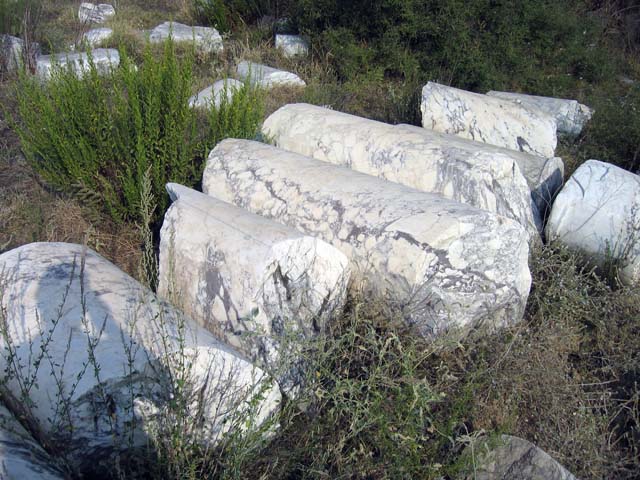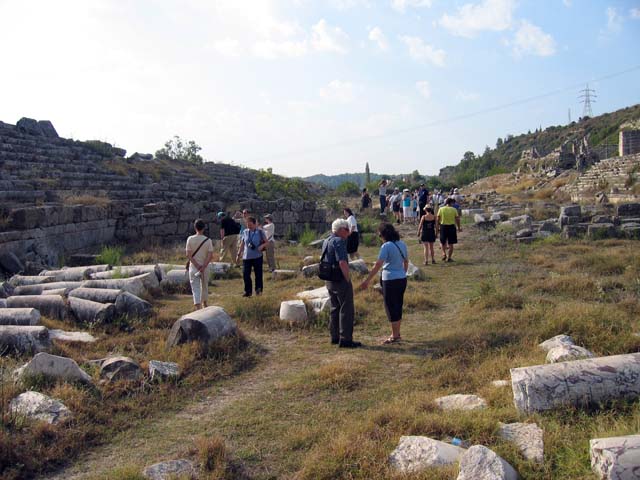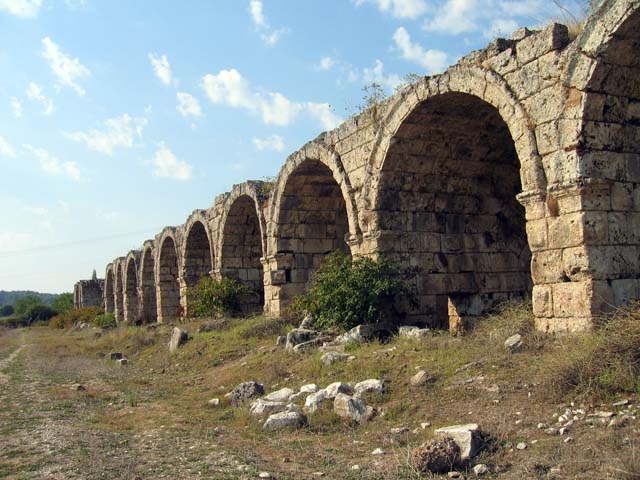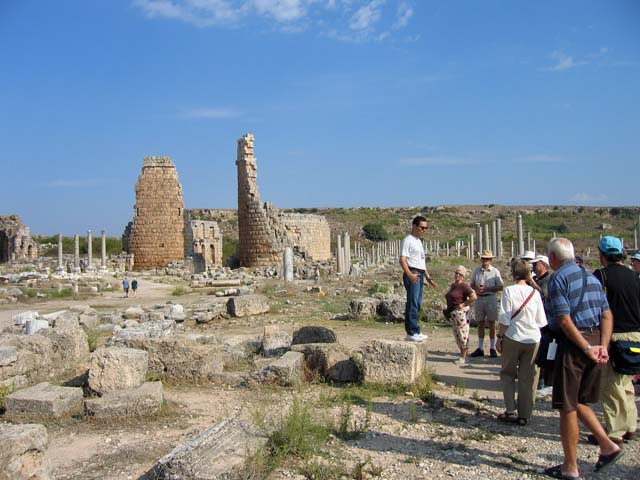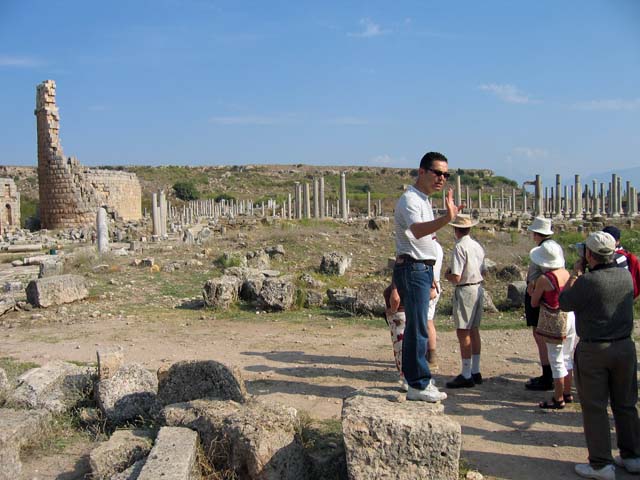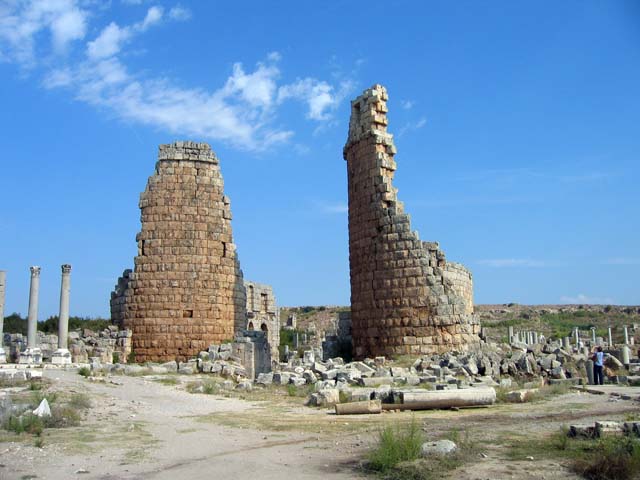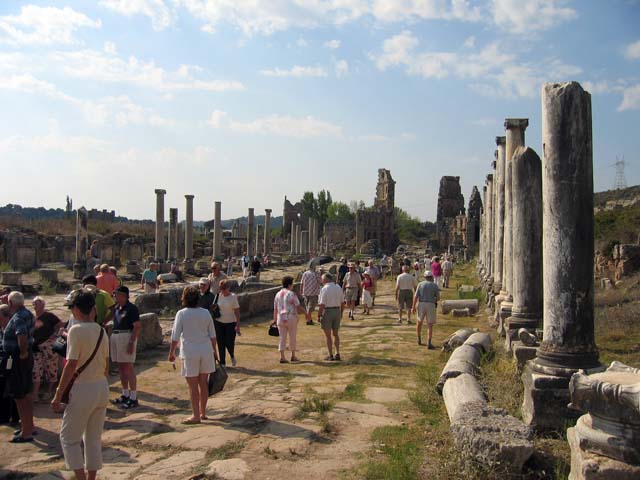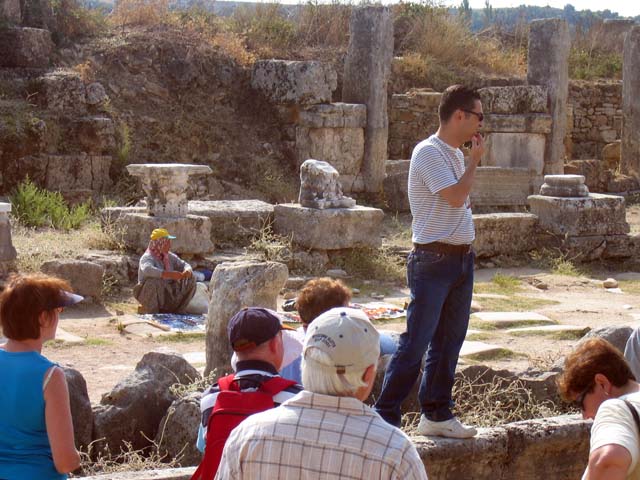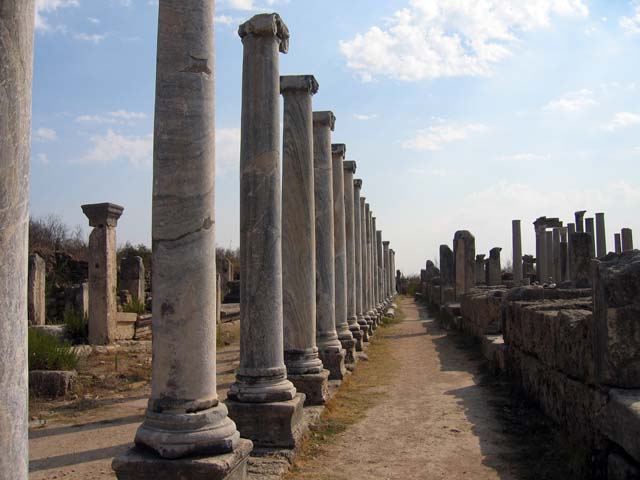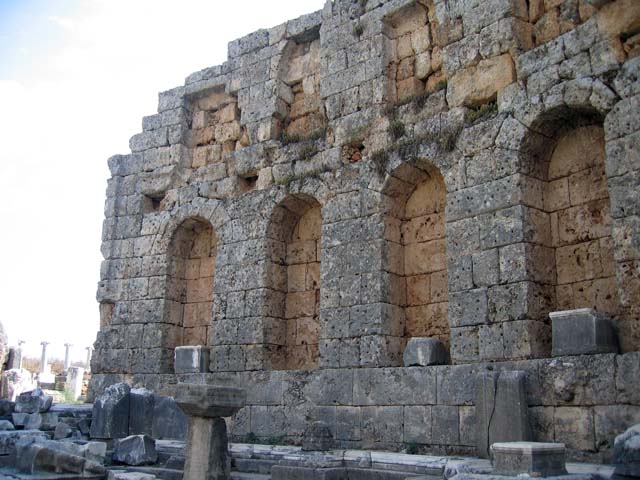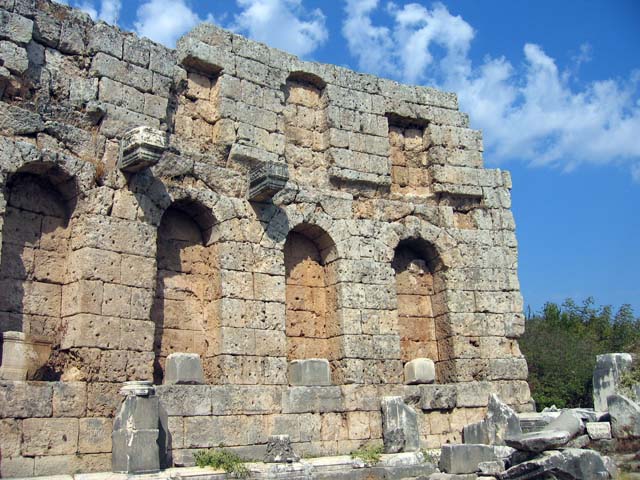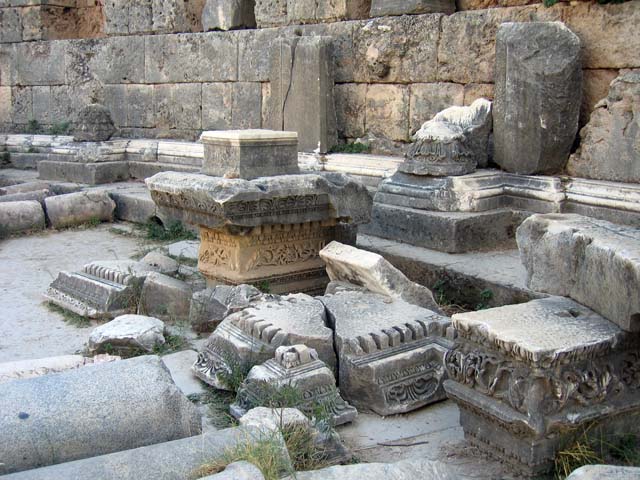|
We spent two nights in Antalya. While we were there, we visited ancient Perge. The remains of Perge (Pergai or Pergae, first mentioned in the fourth century B.C.) a Pamphylian city of particular importance in Roman imperial times, lies on a steep-sided hill on the northwestern edge of the alluvial plain of the Aksu Çayi (the ancient Kestros River) near the village of Murtuna, about 11 miles northeast of Antalya. Like most of the Greek colonies on the west and south coasts of Asia Minor, Perge found itself deprived of one of the main pillars of its existence as its harbor gradually silted up, leading in Byzantine times to its final decline. Perge had one of the oldest Christian communities in Asia Minor. Paul and Barnabas came here after their flight from Antioch in Pisidia and "spoke the word in Perga" (Acts 14:25).
The city stadium is still standing, mostly. This video gives a better view.
Once-beautiful marble columns, now shattered and scattered.
We're exploring the stadium, where once the gladiators fought. This place could have seated 12,000.
Those Romans loved their arches.
That's the remains of the Hellenistic gates at Perge.
Mete tells us all about it.
Getting closer.
This collonaded street was once crowded with merchants. Still is, sorta. Folks sell souvenirs from cloths spread on the ground. The vendors are poorly educated, I think, but they can conduct sales in English and German and Japanese and who knows how many other languages. So who's to say they're not well educated?
More collonades.
More Mete.
I really wish I could have seen this place in all its glory.
There were statues in the niches. The statues are all gone now -- they've been preserved in the Antalya Archeological Museum, which we'll see a little later.
And you can see where there was a second floor. Those stone supports held a wooden deck.
Broken but still beautiful.
|



